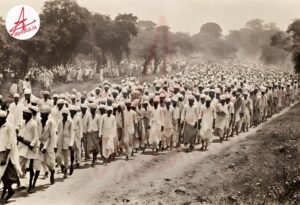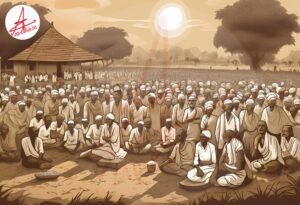Bihar’s origins are deeply rooted in ancient Indian history, being home to some of the earliest civilizations and empires.
- Magadha Empire: Bihar traces its beginnings to the ancient Magadha Empire, one of the most formidable and influential kingdoms in Indian history. The empire flourished between the 6th and 4th centuries BCE, with its capital initially at Rajgir and later at Pataliputra (modern-day Patna). Magadha played a key role in shaping the political and cultural landscape of ancient India.
- Buddhism and Jainism: Two of the world’s major religions, Buddhism and Jainism, have their roots in Bihar. Siddhartha Gautama (Buddha) attained enlightenment under the Bodhi tree at Bodh Gaya, making the region a focal point for Buddhism. Similarly, Mahavira, the 24th Tirthankara of Jainism, was born in Bihar, and his teachings gained significant prominence in the region.
- Nalanda and Vikramshila: Bihar was a global hub of education, housing ancient universities like Nalanda and Vikramshila that attracted scholars from around the world. Nalanda, especially, was famous for its Buddhist learning and produced several renowned philosophers and scholars.
After the fall of the ancient empires, Bihar’s history continued to evolve under various medieval dynasties.
- Gupta Empire (320-550 CE): Often regarded as the Golden Age of India, the Gupta period brought a significant cultural, scientific, and intellectual renaissance in Bihar. The Guptas encouraged advancements in literature, astronomy, mathematics, and art. Pataliputra remained an important seat of power, and Bihar’s influence reached far across India.
- Muslim Rule: After the fall of the Guptas, Bihar came under the influence of various Muslim rulers, particularly during the Delhi Sultanate and later under the Mughal Empire. Sher Shah Suri, an Afghan ruler born in Sasaram, Bihar, briefly replaced the Mughals and introduced significant administrative reforms. Muslim rulers introduced new architectural styles and cultural practices, blending with the existing local traditions.
The advent of British control in India dramatically impacted Bihar’s social and economic structure.
- East India Company’s Influence: In the late 18th century, the British East India Company extended its influence over Bihar, making it part of the larger Bengal Presidency. The British exploited Bihar’s resources, particularly its indigo and opium production, contributing to widespread poverty and social unrest.
- Partition of Bengal and Creation of Bihar Province: In 1912, the British administration partitioned the Bengal Presidency, creating the separate provinces of Bihar and Orissa. This marked the beginning of Bihar as an independent administrative entity, although under British rule.
The path to independence saw Bihar actively involved in India’s freedom movement.
- Role in the Freedom Movement: Bihar was an important center for the Indian independence movement. Key figures such as Dr. Rajendra Prasad, India’s first President, and Jayaprakash Narayan, a prominent socialist leader, were from Bihar and played crucial roles in India’s struggle for freedom.
- Post-Independence Developments: Bihar became a state in the Indian Union after India gained independence in 1947. Over the next few decades, the state saw significant political and social changes.
- Formation of Jharkhand: In 2000, the southern region of Bihar, which had a predominantly tribal population, was separated to form the new state of Jharkhand. This division changed the demographics of Bihar and led to a shift in the state’s economic focus, especially with the loss of rich mineral resources to Jharkhand.
The modern history of Bihar has been marked by both challenges and efforts toward transformation.
- Poverty and Social Inequality: Bihar has long struggled with deep-rooted social issues, particularly caste-based discrimination and economic inequality. These problems have been a major obstacle to the state’s development.
- Political Instability: The state has witnessed frequent changes in government and allegations of corruption, which have further hindered its progress.
- Economic Reforms and Growth: In recent years, Bihar has made efforts to address these challenges through reforms in infrastructure, education, and agriculture. Initiatives such as special economic zones, road construction projects, and the promotion of industrial growth have aimed to boost the state’s economy. Though challenges remain, Bihar is working toward a more developed and prosperous future.
The formation of Bihar is a narrative of resilience, transformation, and rich cultural heritage. From its early roots in the powerful Magadha Empire to its role in India’s independence and post-independence challenges, Bihar’s history is marked by significant contributions to India’s cultural, political, and religious landscape. While the state continues to face economic and social challenges, efforts toward development signal a positive path forward for Bihar.








